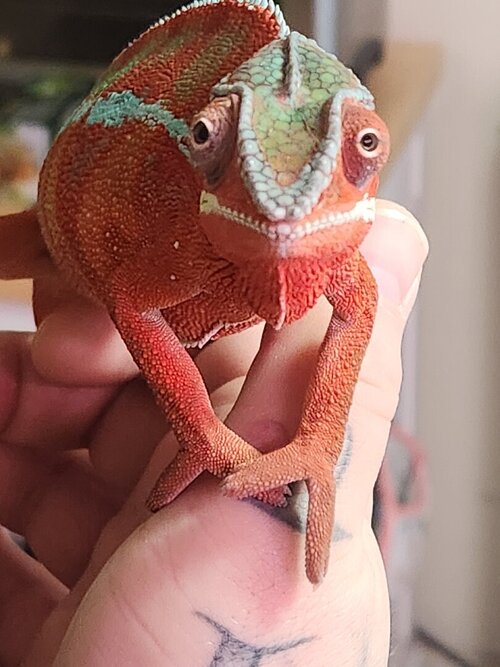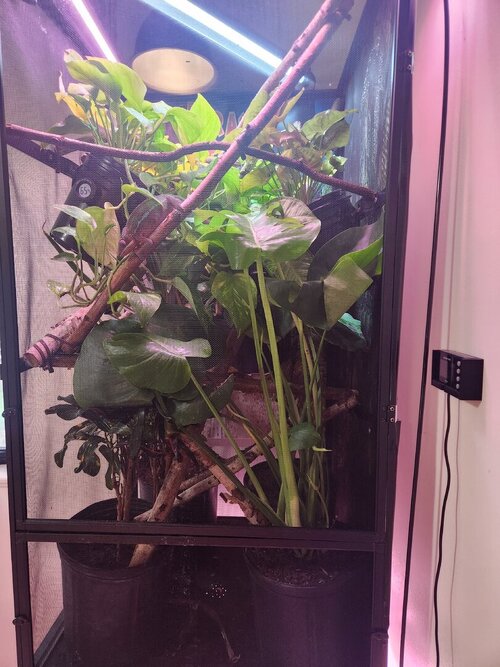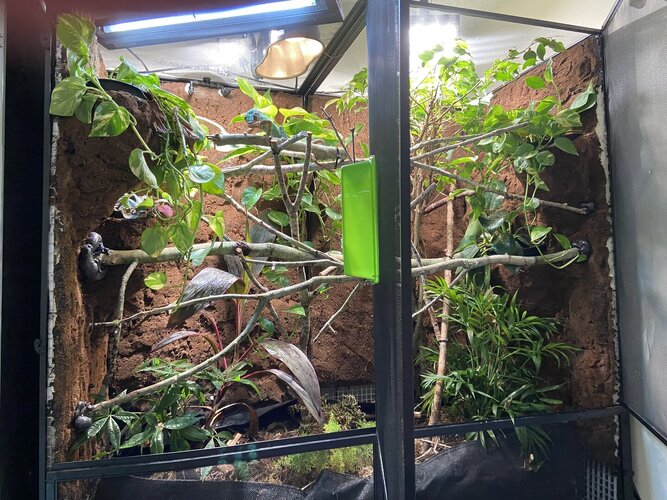Jeevesieb
Established Member
Hello Chamily!
I'm wondering if anyone else has any experience or insight for this.
I have a sub-adult male panther chameleon. He has been in our care for 3 months. At his last vet visit, the vet found a mild pinworm infection. (At least it wasn't coccidia or I probably would have burned the enclosure down haha). I have now incorporated a SERIOUS deep cleaning bi-weekly, including removing him from the enclosure, stripping everything down and washing it and letting it dry. The problem is, whenever I put Paulie back in the enclosure, he does NOT want to settle in; screen climbing all over, won't stay on his feeding or basking branches, and if I open the enclosure door, he will walk straight out. I caught him on the floor of the enclosure a little while ago. I only used a dilute soapy water solution and I sprayed everything down really well to rinse it, so I don't think it's a chemical or anything. I know it's stressful and he doesn't love it, but I'm just wondering if anyone has insight for this? Watching him screen climb constantly is breaking my heart. Thank you!! -Dani and Paulie (the cham) I have attached a Paulie pic of Paulie staring me down while I'm cleaning and my husband holds him lol.
I have attached a Paulie pic of Paulie staring me down while I'm cleaning and my husband holds him lol.
I'm wondering if anyone else has any experience or insight for this.
I have a sub-adult male panther chameleon. He has been in our care for 3 months. At his last vet visit, the vet found a mild pinworm infection. (At least it wasn't coccidia or I probably would have burned the enclosure down haha). I have now incorporated a SERIOUS deep cleaning bi-weekly, including removing him from the enclosure, stripping everything down and washing it and letting it dry. The problem is, whenever I put Paulie back in the enclosure, he does NOT want to settle in; screen climbing all over, won't stay on his feeding or basking branches, and if I open the enclosure door, he will walk straight out. I caught him on the floor of the enclosure a little while ago. I only used a dilute soapy water solution and I sprayed everything down really well to rinse it, so I don't think it's a chemical or anything. I know it's stressful and he doesn't love it, but I'm just wondering if anyone has insight for this? Watching him screen climb constantly is breaking my heart. Thank you!! -Dani and Paulie (the cham)










